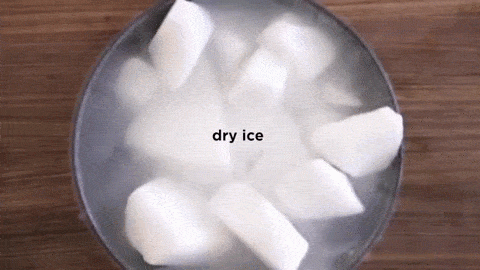"As improbable as it may sound, we see clear evidence that this striking climate reversal—the most extreme imaginable on this planet—happened as many as four times between 750million and 580 million years ago. "
https://scholar.harvard.edu/files/dschrag/files/24._the_snowball_earth_2000.pdf ....
"Breakup of a single landmass 770 million years ago leaves small continents scattered near the equator. Formerly land-locked areas are now closer to oceanic sources of moisture. Increased rainfall scrubs more heat-trapping carbon dioxide out of the air and erodes continental rocks more quickly. Consequently, global temperatures fall, and large ice packs form in the polar oceans. The white ice reflects more solar energy than does darker seawater, driving temperatures even lower.This feedback cycle triggers an unstoppable cooling effect that will engulf the planet in ice within a millennium."...
"When global temperatures drop enough that glaciers cover the high-latitude continents, as they do in Antarctica and Greenland, the ice sheets prevent chemical erosion of the rocks be-neath the ice.... If all the continents cluster in the tropics, on the other hand, they would remain ice-free even as the earth grew colder and approached the critical threshold for a runaway freeze. The carbon dioxide “safety switch” would fail because carbon burial continues unchecked...
"The greenhouse atmosphere helps to drive surface temperatures upward to almost 50 degrees C, [122 F] according to calculations made last summer by climate modeler Raymond T. Pierrehumbert of the University of Chicago.".... "The extreme climatic events them-selves may have played an active role in spawning multicellular animal life."
So back around 700 million years ago the only main life on Earth was Algae - and some other small stuff. So then we had Snowball Earth several times - and this only allowed life to survive near the extreme volcano hot springs.
So whether we SURVIVE the abrupt global warming in the next five years or not - the Algae as Spirulina was here BEFORE the previous most extreme abrupt global warming on Earth.
New research indicates that simple life in the form of photosynthetic algae could have survived a "snowball Earth" event, living in a narrow body of water with characteristics similar to today's Red Sea. ... That would leave a small expanse of open water where the algae could survive.
https://www.sciencedaily.com/releases/2011/10/111011102001.htm
Small pools of open water could be maintained above geothermal hotspots on coastlines of volcanic islands [Hoffman and Schrag, 2000], where the water is shallow enough that the geothermal heat is not diffused laterally and that the sea glacier becomes grounded and slowed by friction with the sea floor.
A long narrow arm of a sea, for example as formed by continental rifting such as the modern Red Sea, located at low latitude and surrounded by desert land, would be invaded by a tongue of the global sea glacier, but this tongue would be impeded by friction with the sidewalls and thinned by sublimation, so that its thickness would diminish to zero before reaching the end of the sea, if the sea is long enough.
https://agupubs.onlinelibrary.wiley.com/doi/full/10.1029/2011GL048846
(3) the depth of the sea at its entrance, and throughout its length, must be great enough that seawater is able to flow under the sea glacier to replenish water loss from the refugium by evaporation/sublimation, and (4) water circulation in the inland sea must be adequate to allow nutrients to be delivered to organisms living in the bay at the landward end.
Dry ice sublimates at -109 degrees Fahrenheit. Our classroom is about 72 degrees Fahrenheit. For dry ice, that's a piece of cake to sublimate and it will, quickly!
For sublimation we need a solid gas that has been super frozen and kept super frozen. Dry ice doesn't need a heat source to trigger it to sublimate. A warm room, a refrigerator, a freezer is warm enough to sublimate dry ice. To turn dry ice into a liquid, we need pressure. Where would this pressure come from? According to the kinetic theory (particles moving), we need something that would create so much pressure, the gas atoms would be squeezed so close together that they would begin to flow. This kind of pressure could be found in a gas planet that has a liquid core. The gases are compressed by the mass of the planet and gravity, to make liquid.
Safety tip: Dry ice is cold to the touch and can cause severe burns from freezing if it comes in contact with skin. Be very careful when handling dry ice and ensure to wear the proper safety gear and use the correct safety equipment.


No comments:
Post a Comment